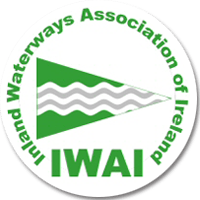A brief History of the Boyne Navigation
The Navigation covers a length of 31 K.M. (19 miles) from Navan to Drogheda and is partly river and partly canal. Most of the canal is on the south side of the river though there are a number of sections of the canal on the north bank of the river.
There are 20 locks on the canal. The locks are named after their location or after prominent shareholders in the original canal company. No. 1: Oldbridge Sealock (Tiernan’s Lock), No. 2: Guard Lock (Turf Lock), No. 3: Lower Staleen (Lower Newgrange), No. 4: Staleen Guard Lock (Upper Newgrange), No. 5: Lower Broe, No. 6: Broe Guard Lock, No. 7: Morgan’s Lock (Rosnaree Lock), No. 8: Slane Guard Lock, No. 9: Slane Castle Lock, No. 10: , No. 11: Carrickdexter Lock, No. 12: Cruicetown Lock, No. 13: Castlefin Lock, No. 14: Deer Park Lock, No. 15: Stackallen Guard Lock, No. 16: Stackallen Lock, No. 17: Taffe’s Lock (Ellison’s Lock), No. 18: Rowley’s Lock, No. 19: Ruxton’s Lock, No. 20: Metge’s Lock (both lock and harbour were filled in and turned into Andy Brennan’s Park).
The canal was only usable for eight months of the year as there was too much water in the river during the winter months and too little in the summer. Below the sea lock at Oldbridge the navigation is subject to tidal rise and fall as well as river flow. This would have imposed a time window on traffic to and from Drogheda.
These factors would have reduced the commercial viability of the system. Cargos of coal and wheat were carried up river while mainly the products of the mills – wheat, flour and oatmeal were carried down river. The navigation eventually succumbed to competition from roads and railways.
In 1902 James McCann of Ardsallagh, Navan took over the canal from the Boyne Navigation Company on a lease of 7 years. A pleasure cruiser, the ‘Ros na Ree’, operated a passenger service in the summer months between Oldbridge and Navan during the years 1905-1914. The canal still did not pay so the Boyne Navigation Company went into liquidation in 1913.
In 1915 the canal was bought by John Spicer, son-in-law of James McCann. The canal continued in operation until 1923 when it was abandoned. Sections of it were sold off. An Taisce bought the remaining parts of the canal from John Spicer for £1 in 1969.
Click here to read more details regarding the history of the Boyne Navigation.
